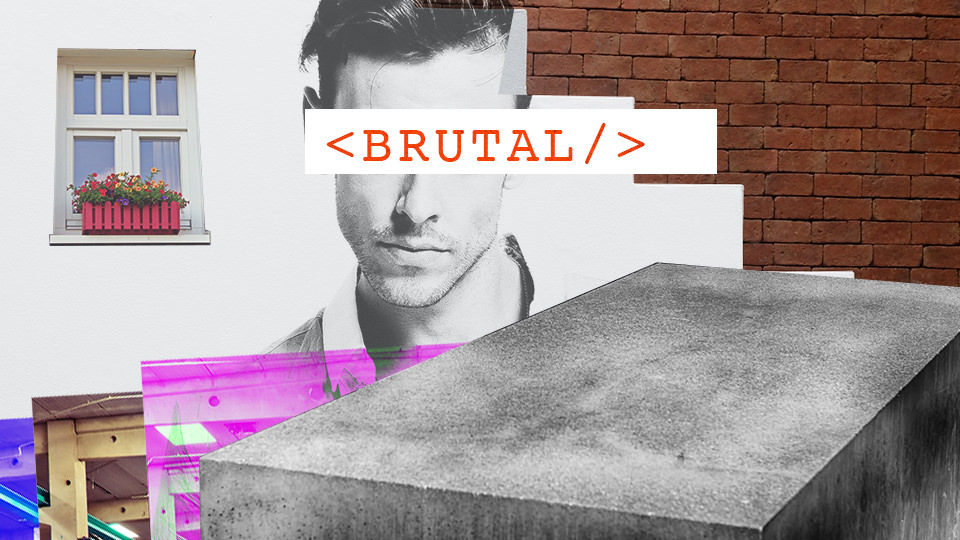Brutalism in Web: What We Used to Call Bad

In web design, I always seem to find connections from other mediums’ trends. These trends include, but are not exclusive to: Arts & Crafts, Futurism, Materialism, Contructivism, Minimalism, Pre-modern, Modern, Post-modern, Post Post-modern, De Stijl, Die Brücke, Die Hard, Romantisicsm, and any other “ism” you can think of.
Okay, maybe I made some of those up. And most of those you really have to look for in order to spot them in the web.
My point is that in our creative processes, web designers have a lot to think about. We start out with several ideas and really try to solve problems before they start. This includes collaboration and researching current trends.
Brutalism
But the newest trend in web throws that out the window in the sense that the medium is truly the massage, and the content is driven by it. What do I mean by this? Web design is seeing more of a “brutal” approach as of late.
According to Brutalist Websites,
“In its ruggedness and lack of concern to look comfortable or easy, Brutalism can be seen as a reaction by a younger generation to the lightness, optimism, and frivolity of today’s web design.”
Basically – web designers want to truly use the browser in its native form.
It’s pretty simple to make a quick opinion on Brutalism at face value. It’s rugged and unapologetic, which, at its core, really defines it and has ultimately become trendy.
Even Jeffery Zeldman’s website has colors and shapes of the Brutalist nature. But, when you start going through history, there are many references to Brutalist architecture and Contructivism philosophy. We all remember the MySpace mentality of “I can do this myself” towards development. In fact, if you want to start building your own Brutal website, there’s already a framework, there’s also a Brutalist guide to UX.
While Brutalist architecture shows material in man-made items such as steel and poured concrete, Brutalist web designers are using assets that are native to web browsers. Colors and font faces that are standardized amongst all modern browsers keep fully functional experiences available to all users. It’s like you’re doing great design with minimal exterior features. This interior design studio, Zieglerbnrg is a great example and has a handsome nod to the PMS swatch book.
Le Corbusier
If we’re talking about Brutalism, we need to bring up Le Corbusier. Although proclaimed as a pioneer of modern architecture, we must realize that Le Corbusier also produced many Brutalist works during his lifetime. I won’t go completely into his portfolio but I’ll share two works with you; Saint-Pierre Church, Firminy, France (1963), and The Convent of Sainte Marie de La Tourette (1953–1960).
We can quickly see the use of concrete and the patterns and textures that come with it. This is the exact same concepts that Brutalist web design broadcast.
Is Brutalism the right thing for me?
Brutalism isn’t exactly what I’ve learned and practiced. It can be difficult to use, but only if you don’t expect the nature of the aesthetic. The trend, at least at the moment, is too distracting to be compelling to a user. Maybe with time Brutalism in the web can be something we study and use on a wider scale.
